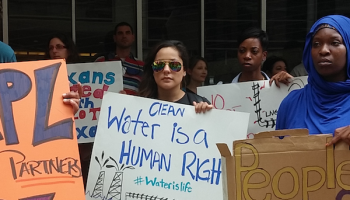U.S. Government Policies
- Consumer Product Safety Improvement Act (CPSIA) of 2008 : Addresses standards for toddler and infant products, testing and certification of consumer products, lead concentrations in products, and phthalates limits in child care articles and toys, along with some other assorted products and compounds of interest. In addition to the implementation of the CPSIA, the website SaferProducts.gov was concurrently launched, which provides a searchable online database of consumer product incident reports.
- HR 2715: Further improvements to the CPSIA passed in 2011 to provide the Consumer Product Safety Commission with greater authority in enforcing consumer product safety laws. The amendment also further addresses lead content limits, third-party product testing, and product certifications.
- Toxic Substances Control Act (TSCA): Passed in 1976, the Toxic Substances Control Act aims to regulate chemicals in everyday products by providing EPA with the authority to require reporting and testing of potentially hazardous consumer products, along with the ability to restrict the use of specific chemical substances of mixtures. Generally excluded from the TSCA are food, drugs, cosmetics, and pesticides. Since the Act passed in 1976, the law has never been amended or reauthorized and the EPA has only been able to successfully restrict the use of 5 chemicals and currently only requires testing on a small portion of chemicals that are currently on the market (Safer Chemicals).
- Federal Hazardous Substances Act (FHSA): The FHSA was passed in 1994 and requires labeling on potentially hazardous or dangerous household items. Consumer products that are considered toxic, corrosive, flammable, irritants, or a strong sensitizer and also have the potential to cause significant personal injury or illness. Products that may be regulated under this law are children’s toys, cribs, rattles, bicycles, and bunk beds.
Current Regulations for Arsenic in Products
-
The toy industry has established a voluntary migration standard (ASTM F973-07) for the amount of arsenic that can migrate from toys of 25 ppm. The European toy industry has established a migration standard (EN 71) of 25 ppm for arsenic.
- On February 10, 2009 the CPSIA adopted the ASTM F973-07 limits for arsenic and other metals (view ASTM standard) as a mandatory standard.
- California prohibits the sale of any toy in which the coating contains an arsenic compound.
Bromine Current Regulations for Products
- U.S. chemical manufacturers have ceased the production of two forms of PBDEs, penta and octa, but have not stopped making deca.
- Producers of decaBDE announced in December 2009, that they were to phase out production (EPA 2009)
- Deca has traditionally been used primarily in casings for televisions and electronics.
- The toy industry has not established a voluntary migration standard for the amount of elemental bromine that can migrate from toys.
- Four states (Washington, Maine, Oregon, and Vermont) have passed laws to phase out deca-BDE in products sold in the respective states.
Proposed Legislation
-
Chemical Safety Improvement Act: Proposed in May of 2013, this Act presents the need for chemical reform, specifically addressing the current flaws in the Toxic Substances Control Act (TSCA) and ways to fix them. The act would give the EPA more authority by allowing them to enforce product labeling, restrict uses of products, or completely ban products or chemicals from the market. The act also intends to require the EPA to prioritize the hazard level of all existing chemicals on the market and screen any new chemicals so as to prevent any unhealthy chemicals from entering the marketplace.
-
Chemicals in Commerce Act: Proposed in April of 2014, the Chemicals in Commerce Act is another proposed revision to the Toxic Substances Control Act and is currently being discussed in the House Energy and Commerce Committee.
Other National Standards & Recommendations
- Metals in Packaging Legislation (19 states)
- Testimony of the American Academy of Pediatrics on Lead in Toys Standard (PDF)
State Policies
Each state has their own legislation regarding toxics in consumer products. For the most up-to-date information on the current and proposed legislation in your state, visit SaferStates.com.
International Standards and Policies
- ASTM, European Union, Canadian & Japanese Toy Standards
- TUV Rheinland
- Oeko-Tex
- Oeko-Tex Standard 100 (pdf)
- Oeko-Tex Standard 100 Limit Values (pdf)
- TCO Development
- Nordic Ecolabelling
- Blue Angel

